Posted: December 2, 2009
Date of Sighting: November 29, 2009
Time of Sighting: 12:05 to 12:10 AM PST
Location of Sighting: Longview, Washington (Southwestern Washington)
Description: I saw an electric blue
streak in the eastern sky. The object was about 1 & 1/2 times the
size of the moon at that time. The object was about an inch to the left
of the moon, which was visually about a foot above the horizon. I
noticed the object when it was at about the height the moon was at this
point. It descended towards the horizon in a straight line lasting 1 to
2 seconds although the tail did not really appear to be tapering. I
immediately thought meteorite & half expected to hear it impact
somewhere east of Longview, Washington. My impression was of a round
electric blue, large object moving toward the eastern sky in very rapid
stages. Was this a meteorite? I have never seen this color nor an
object other than the moon of this size in the sky.
Note: I suspect
that the witness saw a meteor. Most meteors are green, red or orange in
color. A few meteors are greenish-blue or blue in color. No meteors
were reported to the American Meteor Society web site on this date, but
this does not mean that no meteors were in the sky on the above date
and time.
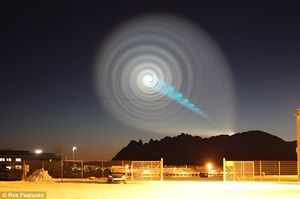
© Rex Features
Strange
spiral: Residents in northern Norway were left stunned after the
lightshow, which almost looked computer-generated, appeared in the
skies above them
Strange
spiral: Residents in northern Norway were left stunned after the
lightshow, which almost looked computer-generated, appeared in the
skies above them
A mysterious light display appearing over Norway last night has left thousands of residents in the north of the country baffled.
Witnesses from Trøndelag to Finnmark compared the amazing sight to
anything from a Russian rocket to a meteor or a shock wave - although
no one appears to have mentioned UFOs yet.
The phenomenon began when what appeared to be a blue light
seemed to soar up from behind a mountain. It stopped mid-air, then
began to circulate.
Within seconds a giant spiral had
covered the entire sky. Then a green-blue beam of light shot out from
its centre - lasting for ten to twelve minutes before disappearing completely.
The Norwegian Meteorological Institute was flooded with telephone calls
after the light storm - which astronomers have said did not appear to
have been connected to the aurora, or Northern Lights, so common in
that area of the world.
Fred Hansen, from Bø in Vesterålen, described the sight as 'like a big fireball that went around, with a great light around it again.'
'It spun and exploded in the sky,' Totto Eriksen from Tromsø told VG Nett.
He spotted the lights as he walked his daughter Amalie to school.
He said: 'We saw it from the Inner Harbor in Tromsø. It was absolutely fantastic.
'It almost looked like a rocket that spun around and around and then went diagonally down the heavens.
'It looked like the moon was coming over the mountain, but then came something completely different.'
'It was like a giant spiral - a shooting star that spun around
and around. I initially thought it was a projector', added Axel Rose
Berg, from Alta.
Celebrity astronomer Knut Jørgen Røed Ødegaard told VG Nett he had never seen anything like the lights.
He said: 'My first thought was that it was a fireball meteor, but it has lasted far too long.
'It may have been a missile in Russia, but I can not guarantee that it is the answer.'
Air Traffic control in Tromsø claimed the light show lasted for
two minutes, but admitted that was 'far too long to be an astronomical
phenomena.'
Tromsø Geophysical Observatory researcher Truls Lynne Hansen was certain the light had been caused by a missile launch.
He told Norwegian media that the missile had likely lost
control and exploded. The spiral, he claimed, was the result of light
reflecting on the leaking fuel. He was quoted as saying the light was
sunlight, despite the strange lights showing up at night.
The Barents Observer quoted Norwegian Defence
spokesman Jon Espen Lien as saying that the Norwegian military does not
know what the lights were - but that they were probably from a Russian
missile.
He said it was normal for Russia to use the White Sea and the Barents Sea as a testing ground for missiles.
Tue, 08 Dec 2009 12:10 EST
Deutsche Presse-Agentur/The Local
Several
eyewitnesses reported seeing a bluish-green fireball over northern
Germany on Monday night - possibly a large meteor burning up in the
Earth's atmosphere, according to experts at the German Aerospace Centre
(DLR).
The object was first sighted over Braunschweig around 11:40 pm, but
people in Celle, Delmenhorst, Lüneburg, Grabow, Kiel and Hannover also
spotted the fireball streaking across the sky. The Network for
Researching Unusual Heavenly Phenomena (CENAP) said on Tuesday the
object eventually broke up into brightly glowing pieces before
disappearing.
Wilfried Tost from the DLR said the fireball was likely a
meteor, explaining that on average one falls to Earth over Central
Europe each month.
Last spring, a German meteorite researcher found the remains of another spectacular fireball on the Danish island of Lolland.
A German boy this summer also claimed he was hit in the hand by a pebble-sized meteorite as he was on his way to school.
Coco Zickos
The Garden Island
Fri, 11 Dec 2009 11:29 EST
Wailua - Residents are still talking about the unique light show they witnessed in the evening skies last week.
A "big ol' honking fireball" was what Steve Yoder said he saw while he
was on his way to Wailua from Waimea the night of Dec. 2. A "flaming
green" object lit up the eastern sky right before 9 p.m.
"I hadn't started drinking yet," he said with a laugh.
In fact, Yoder said he found it hard to believe there has not
yet been an explanation for what he saw, much like the loud noise over
Kalaheo reported by residents in May of this year.
"I've seen meteorites all my life," he said. But added that
what he saw was much different. "It was either a gigantic asteroid or
one of the biggest meteorites I have ever seen."
About the size of a dime in the sky, it traveled at a
downward angle for less than five seconds until it disappeared into the
horizon, he said.
Residents as far as Anahola also reported seeing similar "orange and green" objects beginning around dusk the same evening, "some of them hovering over car ports in Anahola," said an Eastside resident who wished to remain anonymous.
The observer was one of many Eastside residents, particularly
in the Waipouli and Wailua Homesteads areas, who saw unusual activity
occurring around 8 p.m.
"There was an incredible number of shooting stars that night,"
they added. "We always have beautiful stars dashing everywhere, but
this was an amazing sight."
"PMRF did not have any range operations, either on land or in
the air on the evening of Dec. 2," wrote Pacific Missile Range
Facility's spokesperson Tom Clements. "As a reminder, we also did not have operations on the evening that the (possibly jet) noise was heard over Kalaheo."
University of Hawai'i Professor of Astronomy Dr. Gareth Wynn-Williams
said what witnesses are describing "certainly sounds like a large
meteor."
"While it's always a thrill to see one, they are not all that
uncommon and they don't get centrally recorded anywhere, as far as I
know," he wrote in an e-mail Thursday. "But if you were to see part of
it actually hit the ground, it would be well worth searching for the
meteorite itself."
What one observes in the sky is actually called a meteor and is referenced as a meteorite when it hits the ground, he added.
"Only the very largest meteors make it through to be meteorites," he said.
Whether or not the objects seen were actually meteors, they
continue to be unidentified. However, "the most reliable meteor shower
of the year," according to Skyscrapers Inc., is set to peak this
weekend.
More than 100 meteors can be seen per hour during the Geminids
meteor shower and it should be "a great show for Hawai'i," according to
gohawaii.com.
The shower can occur between Dec. 7 and Dec. 17, but peaks Dec. 13 and 14.
Dave Olson
INFORUM
Fri, 11 Dec 2009 11:48 EST
Finding that the sky is blue is not unusual, unless it's 1:15 in the morning.
That's what happened early Friday when observers from western Minnesota
to northern Wisconsin reported seeing a bright blue or green flash in
the sky.
The National Weather Service in Grand Forks, North Dakota,
logged a call at 1:25 a.m. from someone 15 miles west of Bemidji,
Minnesota, who reported the sky looked green.
The weather station then heard from a sister station in
Duluth, Minn., which passed along observations from law enforcement
agencies in Wisconsin, where a huge fireball was seen near the town of
Fifield that created temporary mid-day brightness, said Bill Barrett, a
Weather Service official in Grand Forks.
Officials suspect the phenomena was a meteor, as this week marks the peak of the Geminid meteor shower, Barrett said.
A Becker County Sheriff's Department deputy was dispatched to
investigate two reports of lights in the sky about 1:36 a.m., Sheriff
Tim Gordon said.
The reports came from Highway 10 near Frazee, Minn., and Highway 34 east of Detroit Lakes.
Nothing was found, but the area was checked to make sure it wasn't a downed plane, Gordon said.
Gordon said there was ice fog in the sky and it's likely that
whatever the object was, it appeared to be closer to the earth than it
actually was.
He said the sheriff's department received similar reports of
lights in the sky about a month ago, when weather conditions were
similar and another meteor shower was occurring.
There have been other strange lights in the sky in recent days and weeks.
Earlier in the week, a bright ball of blue light spotted over
Norway, which was also caught on video, is now believed to have been a
Russian missile test that went bad.
In early December, a bright ball of fire was seen over one of the Hawaiian islands. A meteor is suspected in that sighting.
This
weekend, Earth is passing through a stream of debris from extinct comet
3200 Phaethon, source of the annual Geminid meteor shower. Forecasters
expect more than 100 meteors per hour to fly out of the constellation
Gemini when the shower peaks on Dec. 13th and 14th. For most observers,
the best time to look will be from 10 pm local time on Sunday night to
dawn on Monday morning.
Click here to watch an early-arriving Geminid streak past the Moon on Dec. 9th.
"That was a good one," says NASA astronomer Bill Cooke, who recorded
the meteor using an all-sky camera at the Marshall Space Flight Center
in Huntsville, Alabama. "We should see many more this weekend." Cooke
and colleagues are broadcasting a live video feed
from their camera, which will monitor the skies over Huntsville
throughout the Geminid meteor shower. The soundtrack is a 55 MHz
forward-scatter meteor radar located near the optical camera.
Got clouds? If you can't see the Geminid meteor shower, try listening
instead. The US Air Force Space Surveillance Radar is scanning the
skies above Texas, and when a meteor passes overhead--ping!--there is
an echo. Tune into Spaceweather Radio for live audio.
A
trail of gold. That's what a Langham women said an apparent meteor left
behind when it zipped across the Saskatchewan night sky. Laurie Suiker
says she was driving home just before 6:00 Friday evening on Highway
16, near Lutheran Road, when she saw a flash of light. She initially
thought it was a shooting star.
"I watched it trail for a tiny bit and then it went, poof !"
said Suiker. "And there was this beautiful golden shower. It wasn't
huge. It was way up there, but it was pretty beautiful."
Suiker described the flash for her husband, Chris, and
compared it to the meteor sighting in November of 2008 near the
Alberta/Saskatchewan border (Flash pictured right).
"It was not even close to that, but it was still
pretty nice to see. It didn't light up the whole sky or anything. I
watched (the trail) for about four minutes."
Meantime, one astronomy enthusiast said Suiker's sighting
isn't surprising. Gary Stone, former president of the Royal
Astronomical Society in Saskatoon,said the Earth always passes through
comet debris this time of year.
"Being that it's near the peak of the Geminid meteor shower,
it's quite likely it's an early one." said Stone. He added people
should look to the Saskatchewan sky this weekend, as they could see
quite the show in throughout Sunday morning, evening, and Monday
morning. He's expecting to see 120 to 140 meteors an hour at the peak,
most no bigger than a kernel of corn, but still visible to the naked
eye.
Comment: A comment posted by a reader to the original article stated:
Saw something appearing...
On December 13th, 2009 LeRyck (not verified) says:
I am from Quebec city. Saturday evening, at 17:50 local time, I saw a
quite big green ball streaking through the sky from East to West or
possible from ENE to WSW. It was followed by a reddish tail. The whole
experience did not last more than about 2 seconds. I saw it through a
window. I roughly estimated its speed to 20,000 km/s.
Does anybody else have seen that?
Steve Gorman, Dan Whitcomb and Cynthia Osterman
Reuters
Mon, 14 Dec 2009 16:26 EST
NASA's
new infrared space telescope was launched into orbit on Monday on a
10-month mission expected to reveal previously unseen objects ranging
from near-Earth asteroids to some of the most distant galaxies in the
cosmos.
The Wide-field Infrared Survey Explorer, or WISE, was carried into a
polar orbit 326 miles above Earth by a Delta II rocket that lifted off
before dawn from Vandenberg Air Force Base in central California.
"All systems are looking good, and we are on our way to seeing
the entire sky better than ever before," said William Irace, the
mission's project manager at NASA's Jet Propulsion Laboratory in
Pasadena.
The $320 million instrument is designed to scan the
entire heavens for the infrared radiation, or glow of heat, given off
by objects that are too cold, too far away or too shrouded in dust to
be seen by conventional visible-light telescopes.
Scientists say the spacecraft's detectors are about 500 times
more sensitive than those of the last infrared sky survey in 1983, and
are capable of producing photograph-quality images of the objects they
find.
Among phenomena likely to be uncovered are large numbers of
failed stars called brown dwarfs -- balls of gas many times smaller
than the sun that lack sufficient mass to trigger their own internal
stellar engines.
Optically invisible, brown dwarfs are thought to be more
numerous than actual stars in the nearby universe. Some may reside even
closer to Earth than the nearest known star, Proxima Centauri, about 4
light years away.
Closer to home, WISE is expected to find hundreds of
previously uncharted asteroids and comets in the neighborhood of
Earth's orbit, revealing more about the inventory of such "near-Earth
objects" and their composition.
At the farthest reach of its gaze, WISE will be able to
illuminate and peer through the dense haze that has obscured some of
the most distant and powerful star clusters in the universe -- a class
of objects called ultra-luminous galaxies.
Located 10 billion light years from Earth, these galaxies are
believed to be super-incubators of new stars, shining with more than a
trillion times the light of the sun, though most of that light is
emitted in infrared.
Brendan M. Lynch
University of Kansas
Mon, 14 Dec 2009 20:25 EST
An investigation by the University of Kansas' Adrian Melott and
colleagues reveals a promising new method of detecting past comet
strikes upon Earth and gauging their frequency
It's the stuff of a Hollywood disaster epic: A comet plunges
from outer space into the Earth's atmosphere, splitting the sky with a
devastating shock wave that flattens forests and shakes the
countryside.
But this isn't a disaster movie plotline.
"Comet impacts might be much more frequent than we expect,"
said Adrian Melott, professor of physics and astronomy at the
University of Kansas. "There's a lot of interest in the rate of impact
events upon the Earth. We really don't know the rate very well because
most craters end up being destroyed by erosion or the comets go into
the ocean and we don't know that they're there. We really don't have a
good handle on the rate of impacts on the Earth."
An investigation by Melott and colleagues reveals a
promising new method of detecting past comet strikes upon Earth and
gauging their frequency. The results will be unveiled at the American
Geophysical Union's Fall Meeting, to be held Dec. 14-18 in San
Francisco.
The research shows a potential signature of nitrate and
ammonia that can be found in ice cores corresponding to suspected
impacts. Although high nitrate levels previously have been tied to
space impacts, scientists have never before seen atmospheric ammonia
spikes as indicators of space impacts with our planet.
"Now we have a possible new marker for extraterrestrial events
in ice," Melott said. "You don't just look for nitrates, you also look
for ammonia."
Melott studied two possible cometary airbursts with Brian
Thomas, assistant professor of physics and astronomy at Washburn
University, Gisela Dreschhoff, KU adjunct associate professor of
physics and astronomy, and Carey Johnson, KU professor of chemistry.
In June 1908, a puzzling explosion rocked central Siberia in
Russia; it came to be known as the "Tunguska event." A later expedition
found that 20 miles of trees had been knocked down and set alight by
the blast. Today, scientists have coalesced around the idea that
Tunguska's devastation was caused by a 100-foot asteroid that had
entered Earth's atmosphere, causing an airburst.
Some 13,000 years earlier, an occurrence thought by some
researchers to be an extraterrestrial impact set off cooler weather and
large-scale extinctions in North America. The "Younger Dryas event," as
it is known, coincided with the end of the prehistoric Clovis culture.
Melott and fellow researchers examined data from ice cores
extracted in Greenland to compare atmospheric chemistry during the
Tunguska and Younger Dryas events. In both instances, Melott's group
found evidence that the Haber process - whereby a nitrogen fixation
reaction produces ammonia - may have occurred on a large scale.
"A comet entering the atmosphere makes a big shock wave with
high pressure - 6,000 times the pressure of air," said Melott. "It can
be shown that under those conditions you can make ammonia. Plus the
Tunguska comet, or some fragments of it, landed in a swamp. And any
Younger Dryas comet presumably hit an ice sheet, or at least part of it
did. So there should have been lots of water around for this Haber
process to work. We think the simplest way to explain the signal in
both objects is the Haber process. Comets hit the atmosphere in the
presence of a lot of water and you get both nitrate and ammonia, which
is what both ice cores show."
Melott cautions that the results are inconclusive because the
ice cores are sampled at five-year intervals only, not sufficient
resolution to pinpoint peaks of atmospheric nitrates and ammonia, which
rapidly would have been dissipated by rains following a comet strike.
But the KU researcher contends that ammonia enhancement
resulting from the Haber process could serve as a useful marker for
detecting possible comet impacts. He encourages more sampling and
analysis of ice cores to see where the nitrate-ammonia signal might
line up with suspected cometary collisions with the Earth.
Such information could help humankind more accurately gauge the danger of a comet hitting the Earth in the future.
"There's a whole program to watch for near-Earth asteroids as
they go around the sun repeatedly, and some of them have close brushes
with the Earth," said Melott. "But comets are a whole different ball
game. They don't do that circular thing. They come straight in from
far, far out - and you don't see them coming until they push out a tail
only a few years before they would enter the inner solar system. So we
could be hit by a comet and only have a few years' warning - possibly
not enough time to do anything about it."
ScienceDaily
Mon, 14 Dec 2009 21:46 EST
An
international team of scientists led by researchers at the University
of Hawaii at Manoa has found no evidence supporting an extraterrestrial
impact event at the onset of the Younger Dryas approximately 13,000
years ago.
The Younger Dryas is an abrupt cooling event in Earth's
history. It coincided with the extinction of many large mammals
including the woolly mammoth, the saber toothed jaguar and many sloths.
This cooling period is generally considered to be the result of the
complex global climate system, possibly spurred on by a reduction or
slowdown of the thermohaline circulation in North America. This
paradigm was challenged two years ago by a group of researchers that
reported finding high iridium concentrations in terrestrial sediments
dated during this time period, which led them to theorise that an
impact event was instead the instigator of this climate shift.
A team led by François Paquay, a Doctoral graduate student in
the Department of Geology and Geophysics at the University of Hawaii at
Manoa (UHM) decided to also investigate this theory, to add more
evidence to what they considered a conceptually appealing theory.
However, not only were they unable to replicate the results found by
the other researchers, but additional lines of evidence failed to
support an impact theory for the onset of the Younger Dryas.
Their results will be published in the December 7th early online edition of the Proceedings of the National Academy of Sciences.
The idea that an impact event may have been the instigator for this
cooling period was appealing because of several alleged impact markers,
especially the high iridium concentrations that the previous team
reported. However, it is difficult for proponents of this theory to
explain why no impact crater of this age is known. "There is a black
mat layer across North America which is correlated to the Younger Dryas
climatic shift seen in Greenland ice cores dated at 13,000 years ago by
radio carbon," explains Paquay. "Initially I thought this type of layer
could be associated with an impact event because concentration in the
proxies of widespread wildfires are sky high. That plus very high
levels of iridium (which is one indicator used to indicate
extraterrestrial impact events). So the theory was conceptually
appealing, but because of the missing impact site, the idea of one or
multiple airburst arose."
To corroborate the theory, Paquay and his colleagues decided
to take a three-pronged approach. The first was to replicate the
original researchers data, the second step was to look for other
tracers, specifically osmium isotopes, of extraterrestrial matter in
those rocks, and the third step was to look for these concentrations in
other settings. "Because there are so many aspects to the impact
theory, we decided to just focus on geochemical evidence that was
associated with it, like the concentration of iridium and other
platinum group elements, and the osmium isotopes," says Paquay. "We
also decided to look in very high resolution sediment cores across
North America, and yet we could find nothing in our data to support
their theory."
The team includes American, Belgian and Canadian researchers.
Analysis of the sediments was done both at UHM and in Belgium, using
the same sediments from the same interval and indepedently did the
analysis work and got similar results. Both the marine and terrestrial
sediment records do not indicate that an impact event was the trigger
for the transition into the Younger Dryas cold period. "The marine and
terrestrial record both complement each other to support this finding,"
concludes Paquay. "That's what makes the beauty of this study."
This project was supported by the Geological Society of
America and the National Science Foundation. Sediment samples were
provided by the Integrated Ocean Drilling Program.
The other authors from this paper are Greg Ravizza (also from
UHM), Steven Goderis and Philippe Claeys from Vrije Universiteit
Brussel, Frank Vanhaeck from the Universiteit Ghent, Matthew Boyd from
Lakehead University, Todd A. Surovell from the University of Wyoming at
Laramie, and Vance T. Holliday and C. Vance Haynes, Jr. from the
University of Arizona at Tucson.
This research will be presented at the American Geophysical
Union Fall 2009 Meeting in San Francisco. Wednesday December 16th, 2:52
PM -- 3:04 PM, Room 2006 Moscone West
Journal Reference:
François S. Paquay, Greg Ravizza, Steven Goderis, Philippe
Claeys, Steven Goderis, Frank Vanhaeck, Matthew Boyd, Todd A. Surovell,
Vance T. Holliday, C. Vance Haynes, Jr. "Absence of geochemical
evidence for an impact event at the Bølling - Allerød/Younger Dryas
transition." Proceedings of the National Academy of Sciences, 2009; DOI: 10.1073/pnas.0908874106
Posted: December 14, 2009
Location of Sighting: Redditch, Worcestershire
Date of Sighting: 11th December 2009
Time: 2315
Witness Statement: From my location just
North of the town centre in Redditch, I saw a single green light
crossing the sky from East to West at an angle of elevation of about
30-40 degrees, and over Redditch town centre (although it was
impossible to tell how far away it was).
I would estimate the light to have been 10-15% the apparent
diameter of the Sun, and wasa vivid green reminiscent of a flare, but
not as bright.
I appreciate that that direction of travel would have
made the starboard navigation light of an aircraft a possibility, but
it was far brighter than a nav light, and it's size as viewed would
have put the aircraft only a few hundred metres away. There was no
sound whatsoever.
Redditch is now within the Controlled Airspace surrounding
Birmingham, but Birmingham Zone air traffic control was not talking to
any aircraft in the vicinity at the time, and nothing showed up on my
Virtual Radar system.
A long white trail that appeared to be the fall of a meteorite was seen in the morning over the mountains.
However, after several inquiries the meteorite hypothesis was dismissed against the hipothesis of a meteorological effect.
According to sources of the Bureau of Aeronautics, it was an aircraft
that was headed for Argentina and that, by the effects of temperature
difference and contact of the turbine with the cooler air, generated a
bright trail that remained in the sky.
Esteban Hermosilla captured this phenomenon in the morning when droving to work from Lo Barnechea to Huechuraba.
"I was going down the Costanera highway and you could clearly
see the marked trail, so I took a picture with my cellphone. I didn't
know what it was, I was astonished, I thought it was a plane but it was
very strange"said Esteban Hermosilla.
See video here (in Spanish)
"At 9 p.m. Central Time on Dec. 16th, a very bright meteor lit up the
completely overcast sky like lightning in southeast Nebraska," reports
Trooper Jerry Chab of the Nebraska State Patrol. "It flashed for
approximately 2 seconds and was followed by ground shaking, which
prompted many calls by the public to law enforcement in a three county
wide area." The USGS says
there was a magnitude 3.5 earthquake near Auburn, Nebraska, at 8:53 pm
Wednesday night, about the same time and place as the fireball.
Coincidence? Readers in Nebraska with photos or eyewitness accounts are
encouraged to submit a report.
A sonic boom like sound heard by many late last night is something that
has happened before, according to State Police. They tell us that is
what it probably is. They tell us there was nothing reported to them
last night as far as an explosion or anything suspicious. Delaware's
Dover Air Force Base has no information regarding any aircraft from
their base that the noise may have been related to.
Stop. Hey, what's that sound?
Several Arkansas City area residents reported hearing explosion-type
sounds or sonic booms recently. But authorities can't seem to pinpoint
the source of the sounds.
Elmer Morris, a World War II veteran, today said he heard the
booms two or three times on Monday and several more times Tuesday. The
booms were heard during daylight hours, he said.
Morris said the sounds are very similar to sonic booms he heard while in the military and on the West Coast.
He didn't hear the mysterious sounds today, he said late this morning.
"I've seen jets flying high, leaving a vapor trail," said Morris, who lives in Crestwood.
"But no booms today."
If jets fly low and break the sound barrier, windows rattle and sometimes crack, he added. They aren't supposed to do that.
Undersheriff Bill Mueller said he also heard reports of the
sounds from a few individuals, including his wife, over the past few
days.
But the source of the sounds has not been located.
"I'll have the deputies be on the alert," he said.
Mueller and two officials at Strother Field said they are skeptical that the sounds are sonic booms.
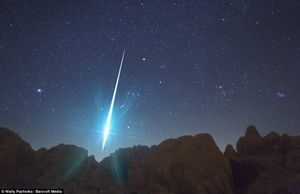
A
huge meteor hurtles to Earth during the annual Geminid meteor shower.
The picture was taken from the Mojave Desert area near Victorville
This incredible picture shows a huge meteor hurtling to Earth during the annual Geminid meteor shower.
Astro-photogrpaher Wally Pacholk captured this amazing shot in
the Mojave Desert area near Victorville under a dark and almost clear
sky.
The annual cosmic fireworks have been growing in intensity in
recent decades with up to 160 meteors visible per hour under optimal
conditions. They travel across the sky at about 22miles per second and
are fairly easy to spot.
The Geminids are caused by the Earth crossing the
debris-strewn path of the extinct comet 3200 Phaethon. The first
recorded sightings were in 1862 in England and the U.S. In these early
days only 14 meteors were recorded per hour.
Viewing conditions were particularly good this year because it peaked on Monday morning two days before a new Moon.
They are best viewed from the Northern Hemisphere although you
can see up to 20 meteors per hour near the horizon in the Southern
Hemisphere.
Earthquakes don't rock Nebraska very often. In fact, seismically
speaking, it is one of the quietest places in North America.
Nevertheless, on Dec. 16th at 8:54 pm CST, USGS seismographs detected a
magnitude 3.5 temblor centered near Auburn, Nebraska:
"It
sounded like those loud grain haulers that drive by, but about five
times louder," reports Laurie Riley, who lives near the epicenter. "The
whole house shook. My kids came running down stairs - they were scared.
It even moved my car, [which was parked outside on icy ground]."
And then the really curious thing happened.
Minutes after the quake, around 9 pm CST, lightning-like flashes lit up
the skies around the area of the quake. Telephones in police
departments and TV stations rang with reports of bright lights, loud
rumbles and shaking ground. Sky watchers, not only in southeastern
Nebraska, but also in neighboring Oklahoma, Missouri and Kansas, saw a
"bright fireball" with "green streamers" moving from northwest to
southeast.
Could these events be connected? Nebraska State Trooper Jerry
Chab, an experienced amateur astronomer who witnessed the lights and
was one of the first to report them, says no. "I think we have the most
cosmic of coincidences: A bright [meteoritic] fireball around the same
time as an earthquake." Indeed, eyewitness descriptions of the fireball
are consistent with a meteoroid disintegrating in the atmosphere. On
the other hand, several readers have pointed out scientific studies
that associate lightning-like phenomena (including ball lightning) with
earthquakes: #1, #2, #3. The fireball, they suggest, might have been a rare manifestation of "earthquake lightning."
Eyewitness Fireball-Quake Reports
Earthquakes in Nebraska are rare, so what are the odds of one happening
within minutes of a meteoritic fireball? This might be a cosmic
coincidence. Or there could be some yet-to-be-explained linkage between
the events. Readers with photos or eyewitness reports are invited to
submit them here.
Summary: The nature of this event is
uncertain--indeed, it might be more than one event. Around 9 pm on Dec.
16th, sky watchers in southeast Nebraska saw a brilliant fireball
streak across the sky. It was so bright that observers with overcast
skies saw it shining through clouds. Telephones in news stations and
police departments rang with reports of bright lights, loud sounds, and
ground shaking. Minutes earlier, around 8:53 pm CST, the USGS says
there was a magnitude 3.5 earthquake in southeastern Nebraska.
Eyewitness Accounts:
Location: 5 miles NW of Pawnee City, Nebraska
Comments: Nebraska State Trooper
Jerry Chab: "At 2100 CST tonight a very bright meteor lit up the entire
completely overcast sky like lightning in southeast Nebraska. It
flashed for approximately 1.5-2 seconds and was followed by sonic booms
and ground shaking which prompted many calls by the public to law
enforcement in a three County wide area."
"I was approximately 5 miles NW of Pawnee City, Ne. when I
observed the flashes," Chab continues. "It was a very bright one, the
sky dimmed a bit and it was followed by another bright flash. Between
the two bright flashes the sky never completely dimmed. Again, this all
occurred within 1.5-2 seconds. I talked to a truck driver who was
approx. 8 miles straight East of me who saw the same thing. A local
Deputy was about 16 miles ENE of me and also saw it. The first 911 call
came at 2201. The calls were about explosions AND earthquakes. One
individual call mentioned 'two' explosions. I attributed the calls to
sonic booms."
"If the Earthquake is confirmed, as it appears to be, I think
we have the most cosmic of coincidences: A large fireball around the
same time of an Earthquake. I am simply amazed!!"
Location: Nebraska City, Nebraska (near Auburn, Nebraska)
Comments: Laurie Riley: "It sounded
like the loud grain haulers that go by but about 5 times louder. The
whole house shook. The kids came running down stairs - they were
scared. The only thing I noticed last night is my vehicle was moved -
since it's been snowing and ice out, I park backwards and park with two
tires on my sidewalk for traction and after the quake, it shook my
vehicle so the back tire slide off the sidewalk and the front tire was
almost off. It lasted about 5 seconds or so. Very loud rumble."
Location: Warren County, Missouri
Comments: Doug Kniffen: "My daughter
and I saw the fireball from east central Missouri (Warren County).
9:05pm on my wristwatch (set to WWV). The fireball appeared about
magnitude -6, with distinctly green streamers outlining the tail.
Certainly an impressive sight, sure wish I had a picture. Very low
apparent altitude, would have missed it if the trees hadn't dropped
their leaves. Told my daughter that there was a good chance of fresh
meterorites in Nebraska. Nice to know that my estimate of a fall zone
was close."
Location: Hastings, Nebraska
Comments: Rich Cartier: "Sitting in a
well-lit living room watching TV, I noticed out the east-facing living
room window a bright fireball heading from northwest to southeast. It
lasted about 2 seconds with a bright flash at the end. It was
remarkable, since it was overcast, and I was in a bright room, yet it
still caught my eye."
Location: between Wichita and Andover, Kansas
Comments: Alan Howarter: "At about
9:06 pm on Wednesday, December 16, 2009 I was driving North and
witnessed what appeared to be a very bright meteor toward the northeast
that lit up for a couple of seconds."
Location: Oklahoma City, Oklahoma
Comments: Rick Foster: "I saw a huge
green fireball at 9:03 pm from Oklahoma City almost due north. Very low
on horizon. Looked like it was moving NW to SE. I was in my truck
driving north on I-35. It was very large, green with orange sparks and
very short tail."
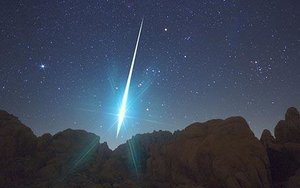
© Barcroft
A huge meteor hurtling to earth during the annual Geminid meteor shower, taken from the Mojave Desert area near Victorville
A huge meteor hurtling to earth during the annual Geminid meteor shower, taken from the Mojave Desert area near Victorville
A green meteor was seen over the Mojave Desert in California as part of the annual Geminid meteor shower.
Astro-photogrpaher Wally Pacholka captured the annual cosmic fireworks show under dark and clear skies on Monday.
The meteor shower has been growing in intensity in recent decades and
was enhanced this year by it falling in a nearly moonless week.
Featuring as many as 140 shooting stars every hour, the Geminid show took place between Sunday evening and Monday morning.
Taking 1522 photographs and capturing 48 meteors, Mr Pacholka was able to get this amazing image.
"The Gemini shower in my opinion is always the best meteor shower of
the year and this one was the best I had ever seen with activity of at
least 150 per hour near peak time", he said.
"A meteor this monster size is extremely rare to see, never mind photograph.
"It has to be one of the brightest meteor photographs on record."
The Geminids are slow meteors that create beautiful long arcs across the sky with many lasting more than a second.
The shower's radiant the point in the sky from which the
meteors appear to originate is the Gemini constellation, giving the
event its name.
The Geminids have been historically overlooked by stargazers,
simply because of their timing so close to the busy holiday season and
during frezzing winter nights, astronomers say.
The
search continues for a full moon-bright meteoroid likely to have landed
in west suburban Beijing on Wednesday in what astronomers said could
lead to one of the biggest discoveries in Beijing this year.
Witnesses in Beijing and nearby Tianjin recorded a clearly
visible fireball-like meteorite descending near the west horizon of
Beijing at 10:23 pm on Dec 16.
The surveillance camera from the planetarium taped a 2-second
footage of the fall phenomena, in which a bright shooting star,
carrying a visible tail, flew towards the east and exploded into
greater brightness before disappearing on the horizon.
"We were at Jianxiangqiao Bridge when driving west-bound on
the North Fourth Ring Road when we caught sight of the brightness
moving to the southeast," Li Xin, a researcher with the Beijing
Planetarium, wrote on the organization's online forum before posting
the surveillance video right after the witness.
"The brightness of the meteor was close to a full moon," he
wrote. "If this meteorite can be recovered, it can become one of the
biggest discoveries in Beijing."
Other residents in Beijing also reported witnesses of the "fireball-like meteorite" to the planetarium.
"Wow, what was it that I saw," wrote one Beijing-based blogger on the
popular portal douban.com, only 12 minutes after the fall phenomena
occurred.
"I was at Chaoyangmen on the East Second Ring Road and I just saw a
bright green ball of light moving to the south. There were no noises
and everything seemed fine outside my car," wrote the blogger, who
named himself "awkward uncle".
But the online witnesses did not draw much serious attention before verified by the astronomy authority.
"You were really awkward, dear uncle. That was Optimus Prime,"
a comment from reader "XY" followed. Other readers exclaimed the entire
witness sounded "very Sci-Fi".
Astronomers from the Beijing Planetarium said the witness was
telling the truth and researchers said they have already reported the
witness to the International Meteor Organization as the latest visual
meteor on Earth.
Li also estimated the location of the landing to be about 40
km west of downtown Beijing, while Zhu Jin, director of the
planetarium, put the estimation at between 100 and 200 km from central
Beijing. The Baihuashan mountainous area at the border of Beijing and
nearby Hebei province was noted to be the most possible location, Zhu
said.
Scientists have launched a campaign online and through TV to
collect witnesses and accounts. Residents in west Beijing are
encouraged to contribute.
But it was unknown what the debris of the meteor would be
like, experts said. If recovered, the discovery will be viewed as a
"fall" according to international practice.
The Beijing Planetarium has never collected any meteorite from past meteors in Beijing.
As of mid-2006, there have been approximately 1,050 witnessed falls producing specimens for the world's collections.
"The witness was lucky. No techniques were involved whatsoever," Li said.
A motorist travelling towards Lynn was amazed when he saw a
flame-spewing UFO shoot across the sky and then disappear before his
eyes.
Jimmy Greenwood (45) is convinced the flying object, about the
size of a football, was a meteorite, but is appealing to Lynn News
readers to help him find out for sure.
Mr Greenwood was driving along the A47, just outside of
Wisbech, at around 12:45pm on Saturday when he saw a bright white light
travel across the sky with flames coming out behind it.
He said: "I was on my way to see my daughter. It was snowing
and I was driving around 35 to 40mph. I saw this really bright light
over the fields to my right for about two to three seconds and then it
just burned away. It looked like a firework rocket and was moving
really quickly.
"The people in the car behind definitely saw it too,
they were pointing towards it and you couldn't really miss it. I've
never really seen anything like it and I think it was definitely a
meteorite."
Mr Greenwood, of Townley Close, Upwell, immediately phoned his daughter and brother to tell them what he saw.
"I've rung lots of people, but they just laughed!" he added.
Sightings of a rare daylight "fireball" - thought to be a meteor - was seen flashing over the Wisbech skies.
A meteor which has passed through Earth's atmosphere is known as a
meteorite, and experts say pieces of the space rock could now be
scattered across a Fenland field.
It was spotted by Jimmy Greenwood, who was driving along the
A47 just outside Wisbech at about 1.15pm on Saturday. The 45-year-old,
from Upwell, said: "I've never seen anything like it. It was about four
houses high and burning white. It went straight across quickly, into a
field and disappeared. It had a vapour trail. It was unbelievable."
Dr John Mason, acting director of the British
Astronomical Association's meteor section, said: "Such sightings are
rare since few fireballs are bright enough to be visible in broad
daylight. Sightings have so far been received from observers in South
Yorkshire, Lincolnshire and Norfolk, but it's likely that the event
would have been visible across most of the East Midlands and Eastern
England."
Chairman of the Peterborough Astronomical Society Martin Hall said: "It's exciting, especially as it might have landed."
The Society of Popular Astrology's (SPA) internet forum was later buzzing with people's accounts of the sighting.
Assistant meteor director at the SPA David Entwistle, said:
"What people have seen is a bright, fast- moving light in the sky - a
meteor. It is very unusual to have a daylight meteor. If we get a
collection of reports from people, we can try to triangulate the path
of the meteor and if it landed, work out where."
Mr Entwistle is urging anyone who witnessed the fireball to
e-mail the time of the event, the altitude, location and its appearance
to either len.entwisle@btopenworld.com or radiometeor@popastro.com
Shawn J. Soper
Maryland Coast Dispatch
Fri, 25 Dec 2009 06:32 EST
Ocean
City - A mysterious, glowing hot object fell from the sky and landed on
the beach in Ocean City last week, but it remains uncertain this week
just what it is and from where it came.
Early last Tuesday morning, an Ocean City cab driver was
walking down the Boardwalk in the area of 22nd Street when he saw a
bright glowing object fall from the sky from north to south and land on
the beach roughly 20 yards away from him. Classic Cab Company driver
Derrick Miller typically drops his taxi back off at company
headquarters on 26th Street after his shift and walks down the
Boardwalk to his home in the downtown area.
Over the years, he has established a relationship with a
resident wild fox that inhabits the area around 22nd Street in front of
the Grand Hotel and often brings food to the animal. Early last Tuesday
morning, Miller was following his normal routine when he saw a bright
light flash across the sky from the north with the glowing object
landing on the beach about 20 yards away.
"I was doing my usual thing and I was on the beach
right in front of the Grand when I saw what looked at first like a
shooting star," he said. "It crashed into the sand about 20 yards away
from me. When I checked it out, it had made a hole in the sand about a
foot and a half wide and about six inches deep. Whatever it was, it was
glowing red hot with sparks and fire coming from some of the holes in
it."
Miller said he examined the object closely, but could not
handle it because of the heat. Instead, he buried it in the sand and
marked the location with a stick. He returned about five or six hours
later and recovered the object, which was still warm to the touch, but
cool enough to pick up and handle.
The unknown oblong object is about an inch-and-a-half long on
its longest side and an inch or so wide. Its shape is irregular and
appears to contain different types of material. It is covered with
small holes around the outside that appear to be fissures of some sort.
Weighed this week at the Classic Cab warehouse, it came it at exactly
20 grams.
It is uncertain just what the object is and where it came
from, but it fell from the sky during one of the most celebrated
astronomical events in the northern hemisphere this year, lending
credence to the working theory that is possibly a meteorite or other
kind of space debris. According to NASA officials, the Geminid meteor
shower arched its way across the northern hemisphere sky from Dec.
6-18, providing one of the most visible astronomical events of the
year.
According to NASA, the Geminid meteor shower reached its peak
on Dec. 13-14, which puts last week's discovery on the beach in Ocean
City right in the window of the most activity in the area. While he
could not be reached for comment or possible identification of the
object, Bill Cooke of NASA's Meteoroid Environment Office confirmed the
Geminid meteor shower provided fireworks over the mid-Atlantic area
last week.
"It's the Geminid meteor shower and it should have peaked on
Dec. 13th and 14th under ideal viewing conditions," he said. "The
Geminids are strong and getting stronger each year."
Miller said in the days before and after his discovery of the
object on the beach, he noticed an increase in the number of shooting
stars observed in the area, particularly on the beach at night or in
darker areas such as Ocean Pines while he was driving his cab. He also
said many of his fares had pointed out the phenomenon.
According to NASA, Geminids are pieces of debris from a
strange object known as 3200 Phaeton. Long thought to be an asteroid,
Phaeton is now classified as an extinct comet. According to NASA, "it
is basically the rocky skeleton of a comet that lost its ice after too
many close encounters with the sun," and "Earth runs into a stream of
debris from 3200 Phaeton every year in mid-December, causing meteors to
fly from the constellation Gemini."
Of course, it remains uncertain just what the object Miller
discovered on the beach last week is, but the presence of the Geminid
meteor shower during the time it was found suggests it could be an
object from outer space, possibly a meteorite.
A meteorite is defined by NASA as a natural object originating
in outer space that survives a trip through the Earth's atmosphere and
lands on the ground. Most meteorites come from small astronomical
objects called meteoroids, but they are sometimes produced by impacts
of asteroids. According to NASA, meteorites that are recovered after
being observed as they transited through the atmosphere or impacted the
Earth are called "falls." All other meteorites are known as "finds."
According to NASA, most meteoroids disintegrate when entering
the Earth's atmosphere. However, an estimated 500 meteorites ranging in
size from marbles to basketballs or larger do reach the surface each
year. Few meteorites are large enough to create impact craters.
Instead, they typically arrive at the surface at their terminal
velocity and, at most, create a small pit, according to NASA.
An Aboriginal dreaming story about a star crashing to Earth with a
noise like thunder has led to the discovery of an ancient meteorite
crater in central Australia.
A Sydney astronomer, Duane Hamacher, found the bowl-shaped
crater in Palm Valley, about 130 kilometres south-west of Alice
Springs, by searching on Google Earth.
He was inspired to look there after learning of traditional
stories told by the local Arrernte people about a star that had fallen
into a waterhole called Puka in the valley.
Mr Hamacher, a PhD candidate at Macquarie University, said
that reality matching the Dreaming story could be a case of pure
chance.
''But if so, it's an incredible coincidence,'' he said.
He is part of a team, led by a CSIRO astronomer, Ray Norris,
that is exploring the possibility that Aborigines were the world's
first astronomers.
Traditional Aboriginal wisdom about the heavens was impressive, Mr Hamacher said.
''It
is impossible to survive on a continent like this for 50,000 years and
not have an intimate knowledge of the natural world around you,
including the night sky,'' he said.
He searched historical records for Aboriginal stories with references
to comets, meteors and cosmic impacts, and looked for matching
astronomical events.
The Palm Valley crater, which the team proposes to name Puka,
was probably formed millions of years ago, so people could not have
witnessed this impact.
''But perhaps the Arrernte knew rocks fell out of the sky and
maybe they deduced that a large rock caused the big bowl-shaped
crater,'' he said.
Another Arrernte Dreaming about a large impact crater called
Gosse's Bluff, which formed about 142 million years ago, ''closely
parallels the scientific explanation'', he said.
The crater, about 175 kilometres west of Alice Springs, is
known as Tnorala and considered a sacred place by the Western Arrernte
people, who say it was formed when a group of sky-women were dancing as
stars in the Milky Way.
One woman who grew tired placed her baby in a wooden basket,
but it fell to Earth, ''forcing the rocks upward'' into the crater's
circular mountain range.
After spotting the Palm Valley crater on the internet, Mr
Hamacher visited the site with two Macquarie University geophysicists,
Craig O'Neill and Andrew Buchel, and an astrophysicist, Tui Britton.
''We found evidence of shocked quartz, which is only produced when there is a substantial impact,'' Mr Hamacher said.
They also determined that the structure was bowl shaped under the surface, which could not be explained by erosion.
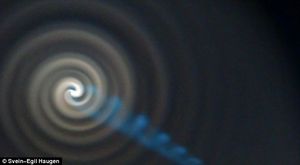
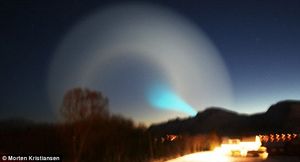
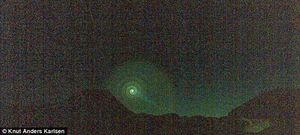
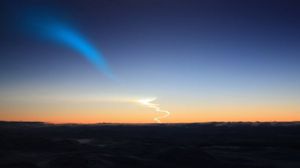

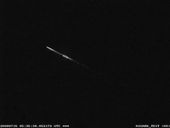

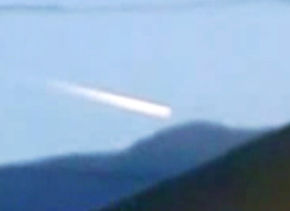
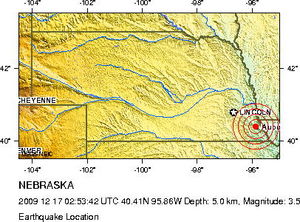
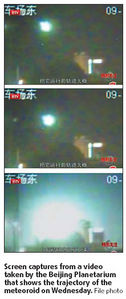
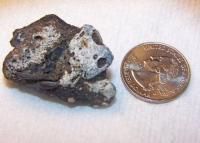
1 comment:
Mystery as spiral blue light display hovers above Norway
I have to say, that event certainly DOES sound like a computer-generated display. Is someone having a bit of fun with us? Perhaps testing some new equipment. We're long in the day when we cannot even believe what we see.
Interesting site. I'm following you and hope to find time to explore your site thoroughly.
Penny (AKA Sweet Little Angel from UFOs, Aliens & Marks.
Post a Comment